Over the weekend we really went to extremes to show just how tough solar panels can be. Today we’ll tell you the results.
We started with a Suntech STP280 that had been hit by a tractor. The frame was bent, wires were ripped loose, glass was shattered and many of the internal cells were broken. Short circuit current of a shiny new panel should be around 8 amps. Open circuit voltage should be 44V. In the “as found” condition, we had 4.5 amps and 43 volts. Connected to a load we could get about 68 watts. Not bad for a module someone had thrown away.
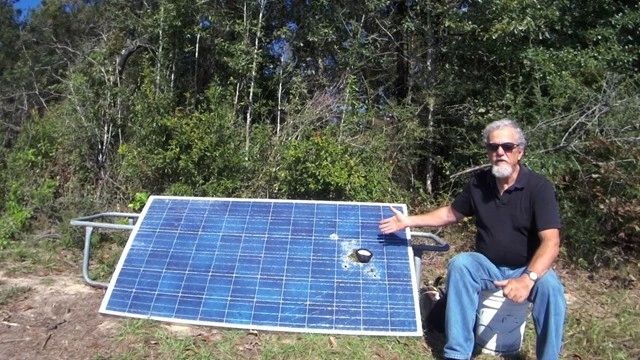
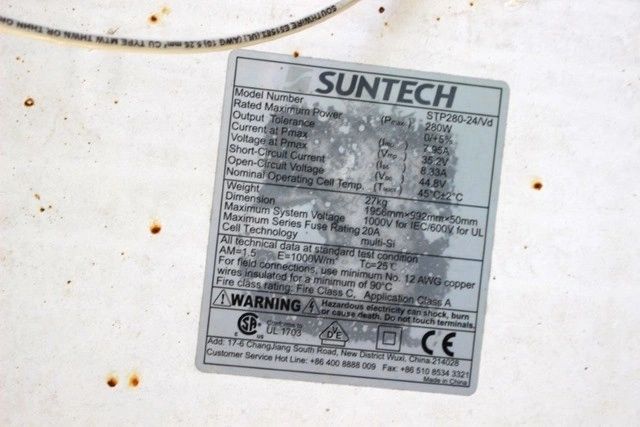
Especially for a panel that looked like this.

And to recap what happened next:

After the shooting, I measured output under varying conditions. The hole sure was a handy place to put a voltmeter!
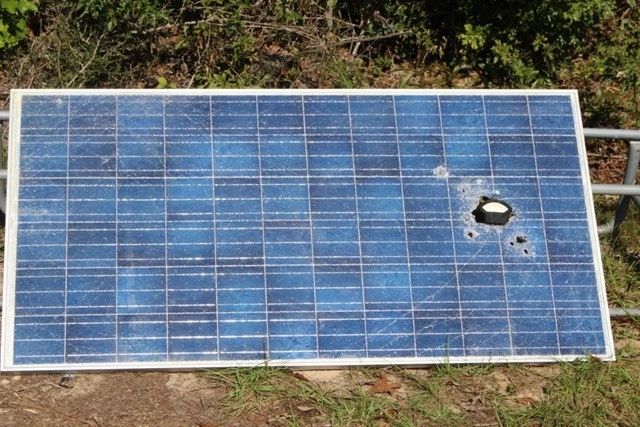
And the open circuit voltage was….39V.
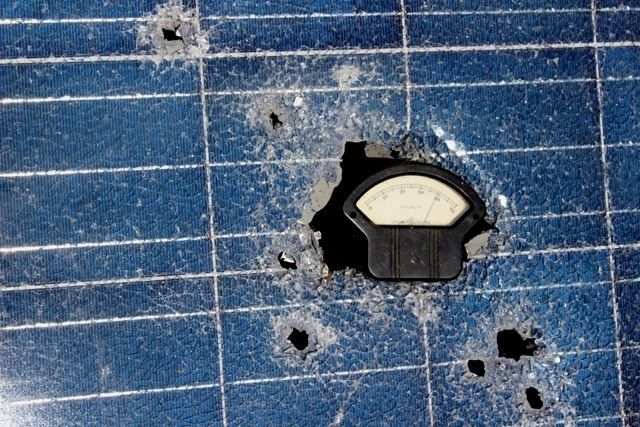
Next I added a 24V driving light as a load. The lamp pulled .961 amps at 24V or 23 watts. That’s all the lamp needed. Was there more?
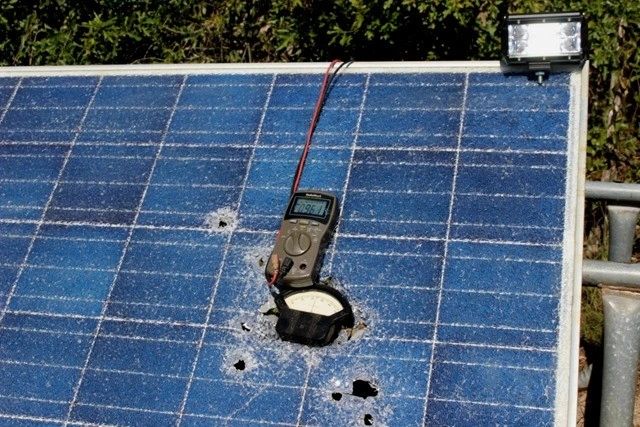
Next, I added a 12V battery, to be charged, and an ammeter.
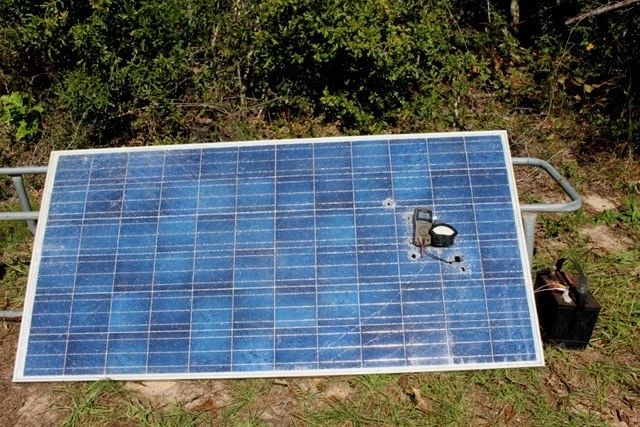
Now we have 2.508 Amps at 13.8 Volts for 34 watts.
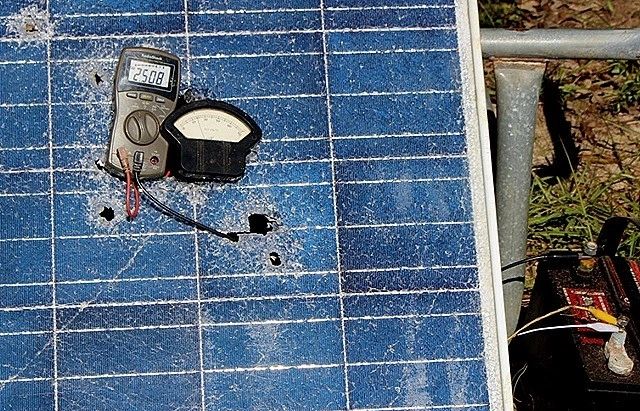
How about 2 batteries in series and the light? 26.2 Volts X .880 Amps = 23 watts
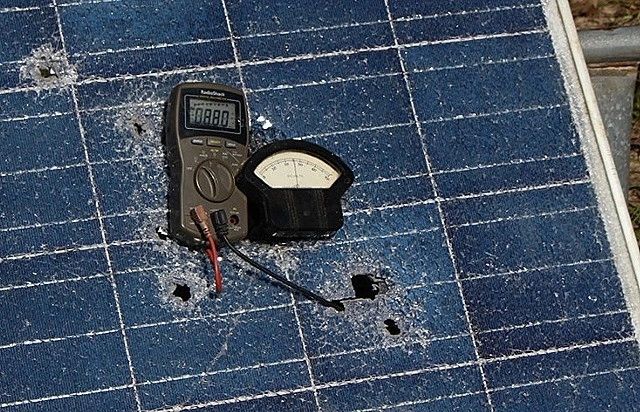
Here’s a look behind the scenes…no trickery, just honest destruction.
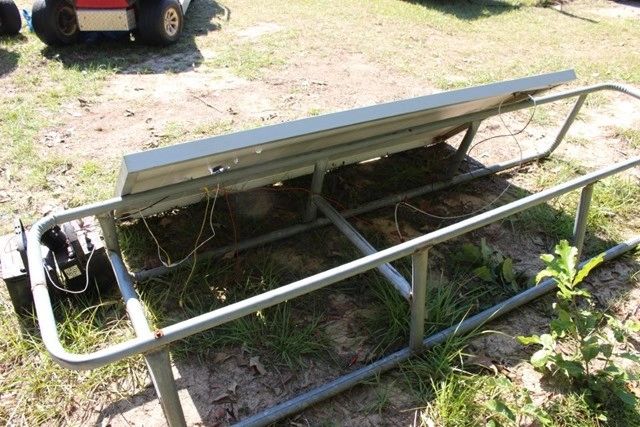
Conclusions? Obviously, PV modules work better if you don’t smash them with a tractor, shoot them with a pistol and shoot them again with a shotgun. The worst damage appears to have been done by the tractor. That hit took it down from 280 watts (rated) to 68 watts. The first two shots, from a .45 and a 12ga. slug, had no effect on the output. It was the huge hole from the shotgun when I backed up that cut the output in half. The point is that the panel continues to output usable power and it did a good job of topping up those batteries.Oh, and remember “Don’t Try This At Home.”By: Neal Collier
